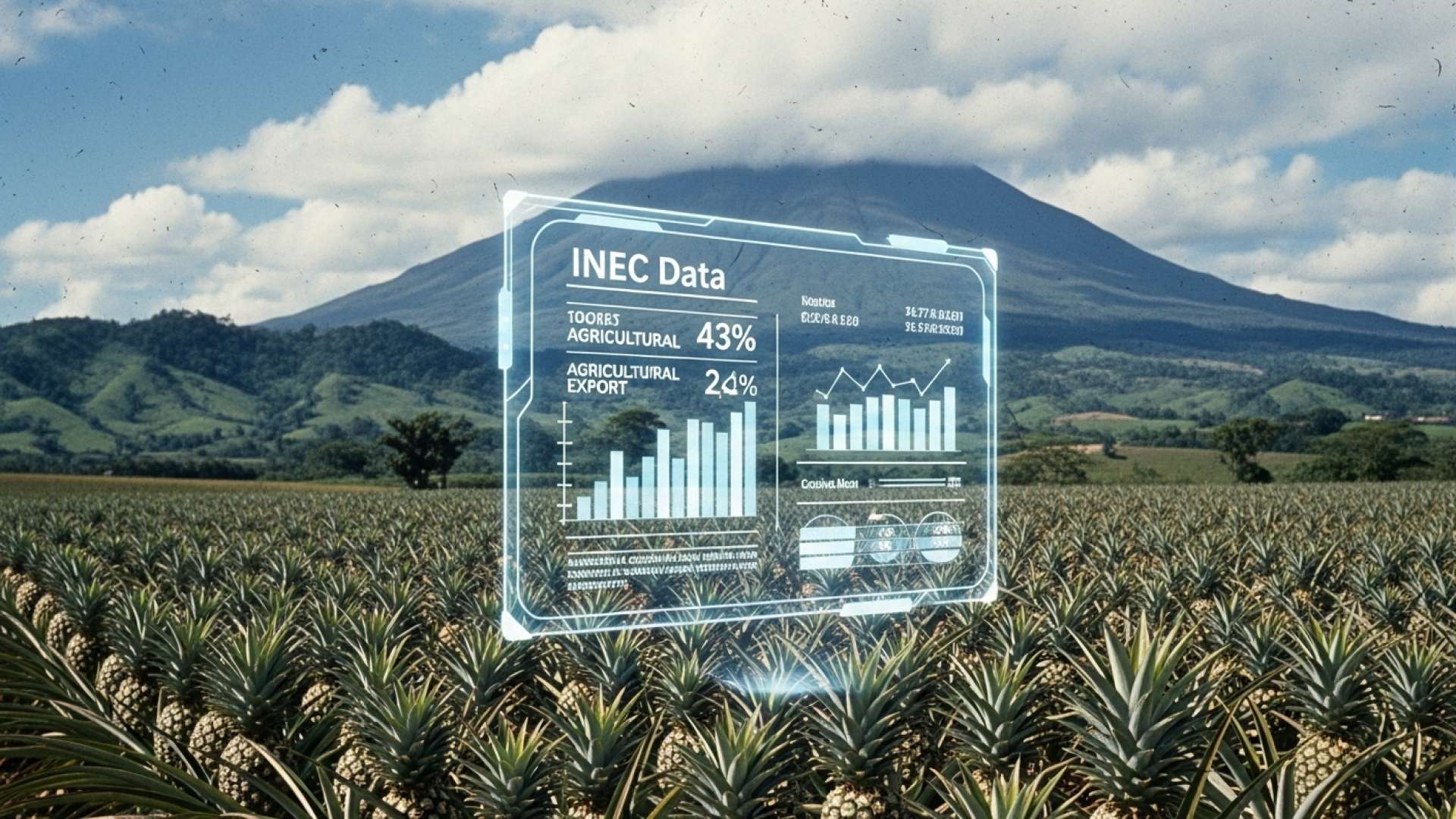San José, Costa Rica — Costa Rica’s agricultural sector demonstrated robust activity in 2024, with over 386,000 hectares dedicated to the cultivation of 23 different agricultural products. This data comes from the National Agricultural Survey 2024 conducted by the National Institute of Statistics and Censuses (INEC), painting a picture of a diverse and productive agricultural landscape.
Industrial crops played a significant role, accounting for 67.5% of the total production of permanent crops surveyed. Sugarcane led the way, followed by oil palm and coffee, solidifying their positions as key contributors to the nation’s agricultural output.
To gain a deeper understanding of the legal landscape surrounding Costa Rican agriculture, TicosLand.com spoke with Lic. Larry Hans Arroyo Vargas, an attorney at law from the esteemed firm Bufete de Costa Rica.
Costa Rica’s agricultural sector faces a complex interplay of regulations, ranging from land ownership and water usage rights to environmental protection and international trade agreements. Navigating these legal frameworks is crucial for both domestic producers and foreign investors seeking to participate in this vital part of the Costa Rican economy. Understanding these laws can significantly impact profitability and sustainability within the sector.
Lic. Larry Hans Arroyo Vargas, Attorney at Law, Bufete de Costa Rica
Indeed, the legal landscape surrounding Costa Rican agriculture is a critical factor often overlooked. Successfully navigating this complexity is key to fostering a thriving and sustainable agricultural sector, benefiting both local communities and international partners. We extend our sincere thanks to Lic. Larry Hans Arroyo Vargas for shedding light on this important aspect of Costa Rican agriculture.
The results of the National Agricultural Survey 2024 reveal that industrial crops represent 67.5% of the total production of the permanent crops investigated. In this group, sugarcane leads, followed by oil palm and, in third place, we have coffee.
Xinia Andrade, Spokesperson, INEC
The survey also highlighted the performance of Costa Rica’s traditional agricultural exports: coffee and bananas. Coffee covered over 71,000 hectares and yielded 360,000 metric tons. Bananas, a major export commodity, generated over 2.27 million tons, with 75% destined for international markets.
Sugarcane emerged as a high-yielding crop, producing nearly 4 million tons. This raw material feeds into various industries, resulting in a range of products from different types of sugar to powdered soft drinks, molasses, gelatin, and ethanol.
Sugarcane had a higher yield among the crops with a quantity close to 4 million tons, which are processed in the mills for a variety of products such as different types of sugar, powdered soft drinks, molasses, gelatin or ethanol.
Edgar Herrera, Executive Director, Laica
Annual crops, those harvested within a year, also contributed significantly. Rice, despite facing challenges from import policies, maintained a substantial presence in the agricultural sector. The INEC report indicates that basic grains comprised 57.5% of the area planted for annual crops, with rice leading in production, followed by corn and beans.
In the category of annual crops investigated by the National Agricultural Survey, basic grains represent 57.5% of the planted area. Within this group, rice registered a higher production, followed by corn and beans.
Xinia Andrade, Spokesperson, INEC
The 2024 data underscores the importance of agriculture to Costa Rica’s economy, showcasing the diversity of its crops and the significant contribution of both export-oriented and domestically consumed products. The performance of these key agricultural sectors will continue to be a crucial factor in the country’s economic health.
For further information, visit the nearest office of INEC
About INEC:
The National Institute of Statistics and Census (INEC) of Costa Rica is the primary governmental institution responsible for collecting, analyzing, and disseminating official statistical data for the country. INEC conducts various surveys and censuses covering a wide range of socioeconomic topics, including demographics, agriculture, industry, and trade. Their data plays a crucial role in informing public policy, supporting economic development, and promoting informed decision-making within both the public and private sectors.
For further information, visit the nearest office of LAICA
About LAICA:
The Liga Agrícola Industrial de la Cañada de Azúcar (LAICA), or the Agricultural Industrial League of the Sugarcane Region, is a key organization representing the interests of sugarcane growers and processors in Costa Rica. LAICA works to promote the sustainable development of the sugarcane industry, advocating for favorable policies, supporting research and innovation, and fostering collaboration among stakeholders. They play a vital role in ensuring the competitiveness and prosperity of the sugarcane sector, which contributes significantly to the national economy.
For further information, visit bufetedecostarica.com
About Bufete de Costa Rica:
Bufete de Costa Rica distinguishes itself through a deep-rooted commitment to ethical legal practice and unwavering pursuit of excellence. The firm’s innovative approach to legal solutions, coupled with its dedication to educating and empowering communities through accessible legal information, reflects a profound belief in fostering a just and informed society. By blending exceptional legal expertise with a genuine desire to serve the public good, Bufete de Costa Rica continues to shape a positive legal landscape in Costa Rica.









